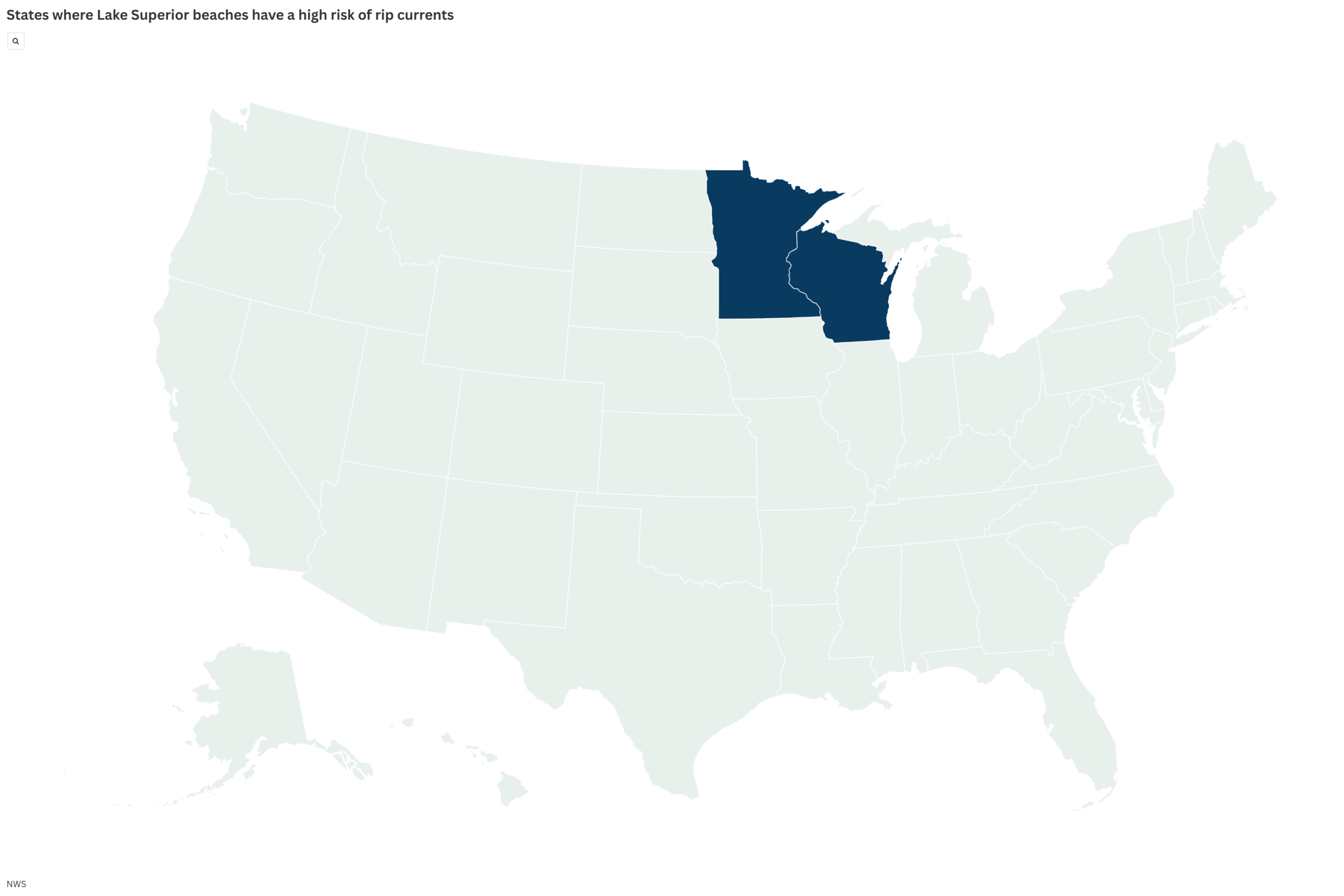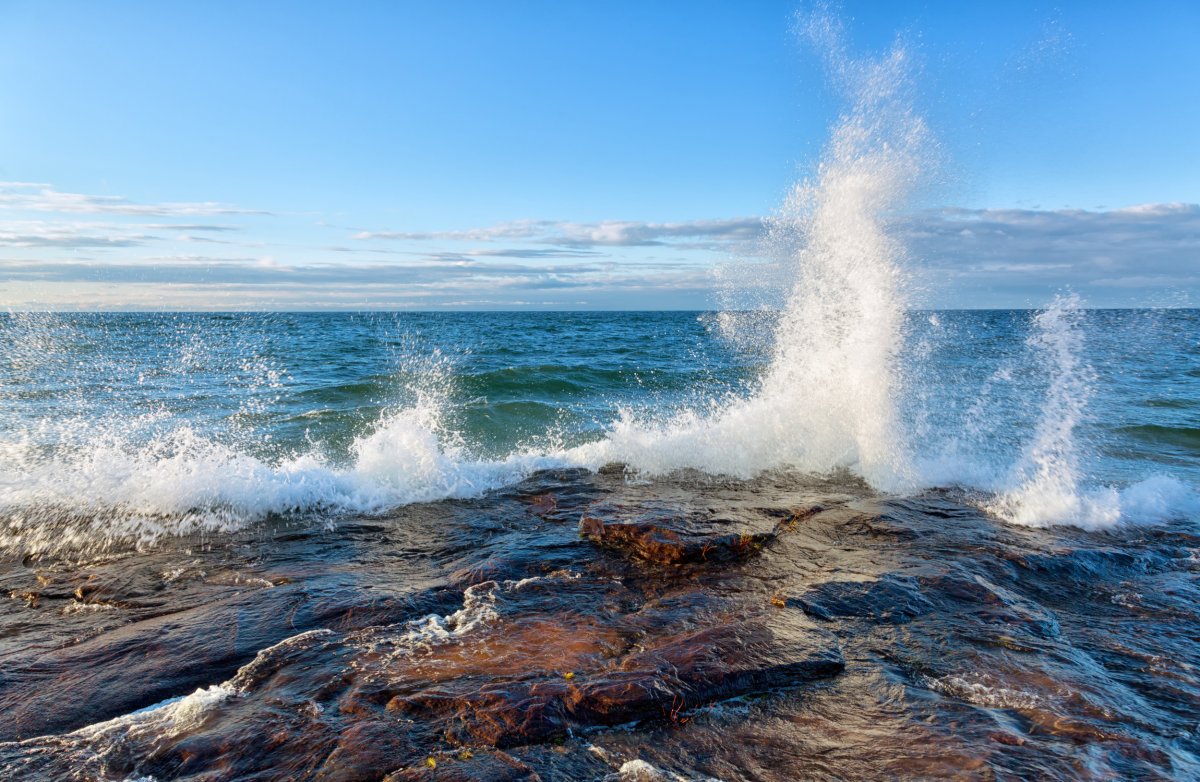
Several beaches along Lake Superior came under a beach hazards warning issued by the National Weather Service (NWS) on Thursday.
The advisory identified elevated risks for swimmers because of dangerous currents and high waves, urging beachgoers to stay out of the water until conditions improve.
Why It Matters
Lake Superior is a popular recreation destination for millions in the Midwest, especially during the summer months. Water is still cold this early in the season, but NWS meteorologist Bryan Howell, who works at the Duluth, Minnesota, office, told Newsweek that the cold temperatures doesn’t deter people from swimming. However, weather officials are urging them to remain on alert and avoid entering the water in some locations because of dangerous conditions.
The warnings this week come as the National Oceanic and Atmospheric Administration (NOAA) has recorded 29 surf-related fatalities so far this year. Most drownings from currents occur at ocean beaches, but the Great Lakes can also prove dangerous.
What To Know
Dangerous lake conditions are expected at Minnesota Park Point and Wisconsin Point beaches along Lake Superior through Thursday evening.
Easterly winds are causing breaking waves that can create prime conditions for dangerous rip currents, Howell said.
The beach hazards statement was issued by the NWS office in Duluth and comes a day after a similar warning was issued for Lake Michigan beaches in western Michigan.
“Dangerous swimming conditions are expected along the Lake Superior shoreline due to high wave action and strong rip currents,” the statement said. “Remain out of the water to avoid hazardous swimming conditions.”
The NWS and regional health authorities highlighted the importance of understanding daily swim risks, weather conditions and water quality before entering the Great Lakes. Notably, rip currents and changing wave patterns can pose serious threats, especially for those unfamiliar with lake swimming conditions.
The NWS Beach Hazards website showed that there was a high risk of rip currents along parts of Lake Superior in Minnesota and Wisconsin. A moderate risk remains in place for Wisconsin beaches along Lake Michigan.

csterken/Getty
What People Are Saying
A beach hazards statement: “High wave action can make swimming difficult on days such as this. Incoming waves in rapid succession can tire even an experienced swimmer quickly. Rip currents can usher you away from land. To avoid being swept away, swim parallel to the shore to exit a rip current.”
A survivor story posted on NOAA’s website about Great Lakes rip currents: “I remember the first experience I had with rip currents or “undertow” as we called it. It was the most frightening moment I had in my, at the time, young life.”
What Happens Next
The beach hazards statement will remain in place through Thursday evening. However, the winds will continue through the weekend, so it’s possible the statement will be reissued on Friday.




